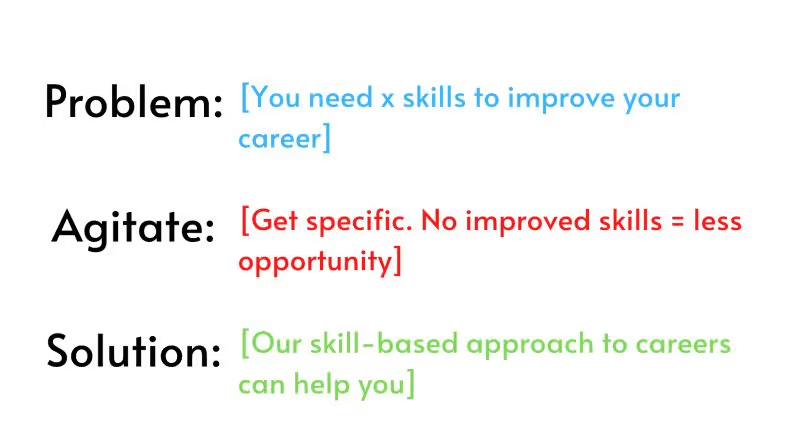All posts
Posted on
8.3.2023
Marketing Tactics for L&D Programs: A Complete Guide
Category:
Learning Hub
Reading time
10
Minuten

Posted on
Category:
Reading time
10

Corporate learning strategies have evolved over recent years and have moved away from the notion of “push” training to “pull” training. Instead of companies dictating the training to be completed, the learner determines what they want to learn.
Learners are given access to the content they determine as relevant to them. This self-motivated approach to learning leads to higher learning engagement when done correctly.
There is, however, a risk to this training approach. If your targeted audience is unaware of the learning opportunities and training programs available, they may no longer be driven or interested in seeking out training. Creating awareness and increasing engagement and adoption of your L&D programs is crucial and requires a strong internal marketing strategy.
The notion of L&D professionals having to "think like a marketer" is not novel. It was noted in the LinkedIn Learnings Report as far back as 2019. This topic is noteworthy because many in the L&D industry find it difficult to tailor and apply the required marketing strategies.
A surefire way to promote your LMS, L&D offerings and improve learner engagement inside your organization is by using marketing strategies as part of your L&D program. Marketing helps you to engage and motivate learners to participate by creating awareness and crafting messages directed at specific groups.
Internal marketing can be simple and is all about delivering the right message, to the right person, at the right time - the golden trifecta when designing a marketing campaign.
This may sound simple, but it does take some work and know-how. That's why we've put together some simple steps to help you apply marketing tactics to your L&D program.
Here are five key steps to follow to get you started with leveraging marketing strategies for your L&D efforts.
Thoroughly understanding your target audience is the initial step for using marketing to drive L&D program engagement. This involves making the target audience’s needs, preferences, and behaviors clear and known. By truly knowing your learners, you can create targeted messaging strategies they can easily relate to.
Asking yourself the four “W” questions is vital at this stage: “Who, What, Why and When?”
Doing thorough research is crucial to find comprehensive responses to these four questions. Here are three important steps to follow:
Creating goals and key performance indicators (KPIs) for the L&D program cannot begin until you fully understand the needs and expectations of the learners. This is because goals should align with the goals of the organization and the learners, while being measurable and specific.
KPIs should allow you to measure the success of the L&D program and determine the extent to which objectives are being met. Tangible results are critical to gaining program support and stakeholder and management buy-in. It is critical to the success of your L&D program that you:
Once you have established your L&D program goals and KPIs, you can design an effective marketing campaign. This step entails creating meaningful, tailored messaging targeted at your learners.
Following a consistent theme across different channels allows campaigns to regularly connect with learners, improve adoption and engagement, and stay top of mind. Creating a consistent storyline that is relevant for everybody is crucial in this phase.
What do you want to say?
The first step is to create content and messages that speak to your learners and align with the program’s learning objectives. Having a thorough understanding of your audience is crucial here.
In our Upskilling Lab, Ross Stevenson from Steal These Thoughts provided a powerful messaging framework (see below). Watch his full talk here.

How do you want to deliver your message?
In the second step, you need to answer the question of how and when to deliver your message. Timing is always key in delivering a message. Equally important is to define the channels and most effective outputs for delivering your messaging. This can include actions such as:
As an example: To promote your program and build your L&D program, it is best to use social media. To keep your audience engaged and nurture the relationship, using email marketing is excellent. To keep learners interested and add value, it is best to use content marketing techniques.
Once you have selected the channels best suited to marketing your L&D programs and efforts, it is time to identify the messaging automation tools for each channel.
Automating your messaging not only helps you to save resources and time but also ensures message delivery consistency and on-time delivery. These tools can be utilized for multiple marketing strategies, from social media campaigns and website updates to email marketing.
Achieving optimal efficiencies in executing your L&D marketing activities is vital for designing scalable processes.
To measure the effectiveness of marketing activities, it is important to track your key performance indicators (KPIs). The key is to analyze your data to identify improvement areas and derive information and trends that can assist with making data-driven decisions that will optimize your marketing strategies.
Most decent learning platforms offer a variety of analytical functionalities, such as engagement rates, platform adoption rates, active user numbers, skills acquired, percentage of skill gaps closed, and qualitative feedback, to name a few. These statistical results can be used to:
These steps will enable you to draft a complete marketing plan to successfully market your learning solution (LMS) to your internal stakeholders and learners. Using marketing strategies in L&D is an effective way to create more engaging learning environments and increase L&D program engagement levels.
Driving engagement levels to their highest ever while positively influencing your company’s workforce requires you to know your learners so you can select the best channels and design a meaningful marketing campaign. By automating your marketing actions, you can achieve higher efficiency levels. Measuring and tracking your efficiency will help you to optimize your marketing activities and reach new heights.
edyoucated is funded by leading research institutions such as the Federal Ministry of Education and Research (BMBF), the Federal Institute for Vocational Education and Training (BIBB), Federal Ministry for Economic Affairs and Climate Action (BMWK).


